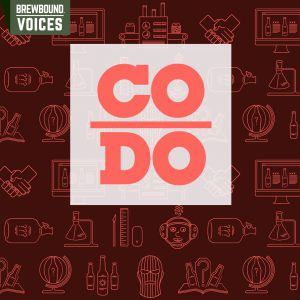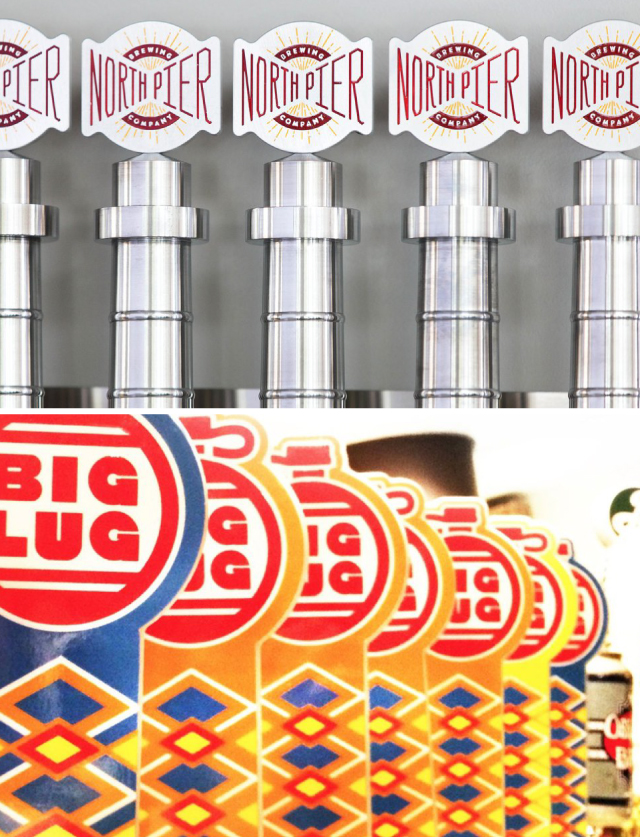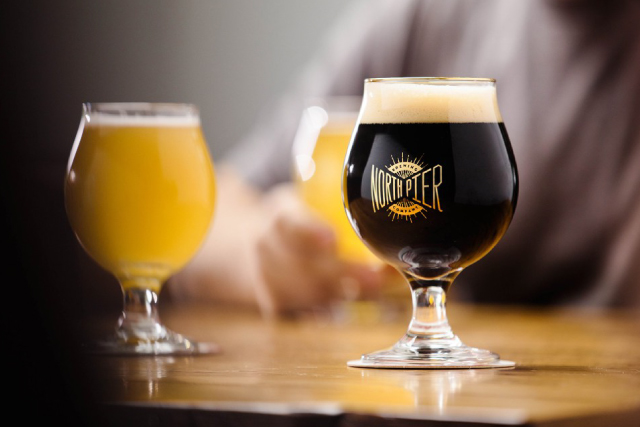
Editor’s Note: In part two of our three-part series on branding considerations for craft breweries, Isaac Arthur, a partner and designer at CODO Design in Indianapolis, Indiana, explains how a well-funded startup might approach its branding process.
Who is Isaac Arthur? Isaac has worked on branding projects for a number of craft breweries — including Fernson Brewing, 450 North Brewing, and Big Lug Canteen. His company recently published an extensive (and free) craft beer branding guide that covers everything from naming and package design strategies to lessons on navigating the TTB label approval process.
Before you dive into Arthur’s piece, below, make sure you give part one — Branding the Bootstrapped Brewery — a read. Also, stay tuned for part three, which will hit the site on Friday.
PART II: BRANDING THE WELL-FUNDED BREWERY STARTUP
On Monday, we discussed how a brewery with limited funds can approach branding and positioning. Now, let’s take a look at how a well-funded startup — say a group with $25 ,000 to $50,000 or more to spend on branding and design — might go about this. It’s worth noting that the concept itself (brewpub vs. production brewery vs. contract brewery, etc.) doesn’t necessarily drive the budget. Rather, the overall scope, competitive landscape, and timeline are the main cost drivers here. We’ve worked with small brewpubs as well as regional production breweries at this budgetary level, for example.
While a bootstrapped brewery takes on most of the heavy strategic lifting to maximize its dollars toward design, here, a well-funded startup can offload almost all of that work to a creative partner. With a budget like this, you can work with an established agency with craft beer experience — someone who understands brand strategy, the market, and broader industry trends. You can afford to hire someone from across the country, and you should be able to get everything you need to go to market within a reasonable timeline.
Below are the major deliverables and outcomes of such a project.
BRAND IDENTITY / BRAND ESSENCE / STORY & VALUES
The most important foundational ‘thing’ to gain from this process is a deep understanding of why you’re starting your brewery. What do you stand for? What role do you play in the community? How are all of these ideas represented visually?
This manifests as a brand name and naming architecture, a modular identity system, tagline, story, and core values.

BRAND VOICE
This is an oft-overlooked portion of the branding process. Without great copywriting (in a consistent, on-brand tone), your packaging, website, and other marketing efforts may fall flat.
Directly informed by your Brand Essence and values, your brand voice can be as simple as speaking in a particular tone, like “irreverent” or “refined,” to name some quick examples. Your brand voice usually morphs and takes life throughout your first year as you produce more sales literature, beer descriptions, press releases, and social media chatter.

PACKAGING
If you’ll be packaging from the start, you have a lot of things to consider. Cans or bottles? What size container? Outer cases or PakTech carriers? Sleeves, pressure sensitive, cut and stack, or flexography?
It can seem overwhelming at first, but your creative partner should be able to help you navigate the entire process, from beer naming architecture, to the actual design work, revisions, TTB approval and production coordination (ensuring everything is printed and applied correctly).
Something else to consider at this stage is the recently launched Voluntary Disclosure Initiative.
While not mandatory yet, this is a push to get all breweries to include caloric and nutritional info, alcohol content, ingredients, and a born on date available on their packaging (or website). I imagine we’ll see some best practices emerge over the next few years, but for now, you can jump ahead of the curve and include it from the start.

TAP HANDLES
Whether you have your tap handles fabricated locally or use a national dedicated vendor, there are a lot of parameters to consider here. Your tap handle needs to stand out as much as possible while being durable, not too top-heavy, recognizable from many different angles (and from a distance!), and have the option to adapt to display different styles of beer (if applicable).

FULLY-CUSTOM, RESPONSIVE WEBSITE
While context and communication needs should drive the web design process, there is a common checklist of content that most breweries should include on their website. This can include any of the following (if applicable): General ‘about’ info (and your origin story), specific beer info for each style, a beer finder, keg availability, a food menu, merch (whether in your tasting room or sold via eCommerce), social media integration, an events calendar, and a blog / news section.
Further, your website needs to be fully responsive—meaning it automatically adapts to whatever screen size it’s being viewed on, from a desktop to tablet or smart phone. Many potential customers will visit your site using a mobile device; if your site is frustrating to use on a phone, you are forfeiting their patronage. On the topic of wasting money, this isn’t 2002—you need to be able to maintain your site yourself without being charged by a design firm to make simple edits and updates. This usually means the site will be built on some sort of Content Management System (CMS), like WordPress. The firm you work with should train you to use this CMS and offer support when necessary.
Here’re a few recent websites we’ve launched to see what this all looks like in the wild:
- http://woodenbearbrewing.com
- http://northpierbrewing.com
- http://biglugcanteen.com

EMAIL MARKETING
Email marketing is a proven way to stay top of mind. We find Mail Chimp to be a great fit for most breweries because it allows you to develop fully custom email templates that match your overall branding and content needs.
Even if you have no desire to use email marketing at the outset, you should start gathering email addresses through your website now. That way, should you ever decide to start an email marketing program, you’ll already be off to a good start.
ENVIRONMENTAL DESIGN & WAYSHOWING
Your brewery space itself is your home base. It’s the most immersive experience people can have with your company and is a huge opportunity to tell your story. This can include everything from the overall layout and design of your tasting room itself, to murals, furniture, atmospheric art, and oft-overlooked wayshowing pieces like bathroom signage, growler washing instructions, trash, compost, and recycling bins, etc.

FULL FESTIVAL KIT
Having a good looking tent setup can draw more folks to your table during beer festivals. Your setup can be as simple as banners and table skirts, or as involved as custom-printed tents, custom jockey box covers, and interactive design pieces / games.
Even if you don’t foresee hitting your state’s beer festival circuit, you’ll likely have the opportunity to table at smaller events and pass out samples. With this in mind, you can design different pieces so they can stand on their own or work in concert with the larger system (example: a table skirt can be used at a small event and within your tent at a big beer festival).
MERCH & DRINKWARE
Beyond the standard logo apparel and drinkware (shirts, growlers, pint glasses, etc.), your spread should include custom pieces like specialty glassware, tin tackers, illustrated wearables, stickers, coasters, and fun things unique to your brewery’s messaging (for example, spoke cards for cyclists or guitar picks etc.). If done well, merch sales can become a solid revenue stream as your brewery grows.

A CLOSER LOOK
Big Lug Canteen out of Indianapolis, IN and North Pier Brewing out of Benton Harbor, MI, are two great examples of brewpubs who invested in branding out of the gate. This focus on story, aesthetics, positioning and overall design have caused them to launch and gain immediate footholds in their respective markets. Read more about Big Lug’s branding process here. And see how we positioned North Pier here. Fernson Brewing Co. is a regional production brewery based in Sioux Falls, South Dakota. By investing in branding and package design, they’re already distributing in three states and are growing more and more each quarter. You can see a more thorough behind the scenes project writeup here.

About Brewbound Voices:
Brewbound Voices was created with the goal of providing readers valuable insight into areas like finance, investment, branding, marketing, sales, and distribution. The column serves as an avenue for experts to contribute their knowledge to our readership. Interesting in writing for Brewbound Voices? Email pitches to news@brewbound.com.
